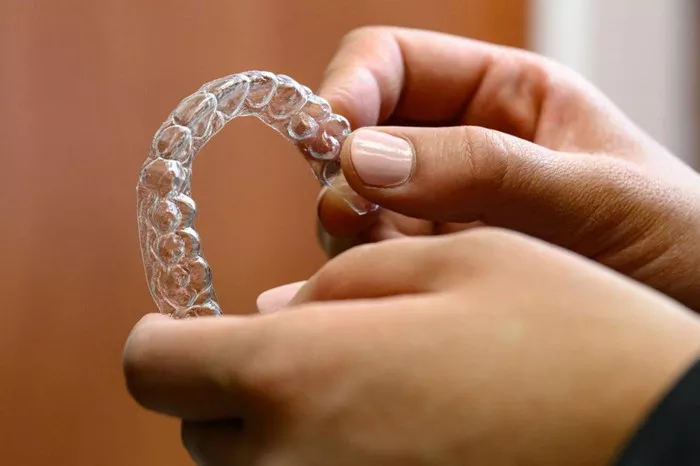West Virginia University is one of only three institutions in the U.S. testing a groundbreaking dental technology that uses “shape memory” material in clear plastic aligners, offering an advanced alternative to traditional metal braces.
“This is a major breakthrough,” said Dr. Peter Ngan, Branson-Maddrell Endowed Professor and chair of the WVU School of Dentistry’s Department of Orthodontics. “The ability to create materials with memory opens a new path in orthodontic research, and these aligners represent a future not yet available commercially.”
While traditional metal braces have been in use for nearly a century, clear aligners have only been around for about 20 years. Despite their growing popularity, many orthodontists still believe metal braces outperform plastic ones.
“The goal is to make clear aligners as effective as metal braces,” Ngan explained. “We want both treatments to deliver the same results while ensuring patient satisfaction.”
Thanks to funding from endowments provided by orthodontic alumni and supporters of the School of Dentistry, WVU researchers acquired 3D printers from Graphy Inc., a South Korea-based company that pioneered this thermoplastic aligner technology.
“This thermoplastic isn’t like hard plastic,” Ngan noted. “If you take it out and place it in hot water, it shrinks and softens, making it easier to reinsert. Once back in the mouth, body temperature returns it to its original shape, which helps shift teeth into place.”
The flexibility of thermoplastic not only enhances comfort but also allows it to pair better with “tooth attachments” — small restorative elements bonded to the teeth to help with movement. Additionally, the material enables varying thicknesses in aligners, improving their efficiency in repositioning teeth.
Unlike metal braces, these aligners are removable, making brushing and flossing more convenient for patients.
The process of creating these aligners starts with a digital scan of the patient’s mouth. From there, a mold is made. Unlike other systems that require sending the scan to a third-party manufacturer, the Graphy printer allows orthodontists to fabricate the aligners directly in their office.
“It’s as convenient as using a Xerox machine,” Ngan said.
To further their understanding of this technology, Ngan’s team is working with the WVU Benjamin M. Statler College of Engineering and Mineral Resources. Mechanical engineering associate professor Sam Mukdadi and his students are conducting tests to evaluate the performance of the aligners.
Graduate teaching assistant Egon Mamboleo from Morgantown is simulating the aligners’ biomechanical behavior and analyzing stress responses in teeth, ligaments, and surrounding bone. His research focuses on the impact of different shapes and placements of tooth attachments to optimize individual treatment plans.
“Thermoplastic aligners have superior grip and contact with teeth,” Mukdadi stated, “making them more effective at moving teeth than conventional aligners.”
Ngan believes that in the near future, about half of all orthodontic patients will be using clear aligners.
“Metal braces are reliable, but many adults are becoming more conscious of their oral health and prefer not to have the ‘teenager’ look that silver braces give,” Ngan said. “These aligners appeal to people of all ages, and our residents and graduate students will be ready to use them when they begin practicing.”
With continued research and innovation, WVU is helping shape the future of orthodontics — one memory-based aligner at a time.
Related topics

